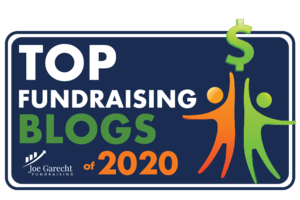Loyal supporters are valuable assets for every nonprofit organization.
Unfortunately, there is an alarming lack of understanding about the definition of “loyal supporter.” Before we address that issue, however, let’s look briefly at why loyal donors are so important.
Because it’s more cost-efficient to retain donors than acquire new ones, loyal donors allow charity fundraising programs to operate more efficiently. The lifetime value of such donors is greater. More money, more cost-effectively raised means more funds for mission fulfillment.
Interestingly, loyal donors also exhibit greater engagement tendencies as researchers Adrian Sargeant, PhD and Elaine Jay, PhD observed in their book Building Donor Loyalty:
Donors who remain loyal are also much more likely to engage with the organization in other ways. Long-term donors are significantly more likely than single-gift donors to offer additional gifts in response to emergency appeals, to volunteer, to upgrade their gift levels, to lobby for the organization, to actively seek out other donors on the organization’s behalf, to buy from a gift catalogue, and to promote the organization to friends and acquaintances.”
Sargeant and Jay even quantify the value of this additional activity. In their experience, they have seen that such activities can increase donor lifetime value by 150 to 200 percent.
Increasingly, charities are coming to appreciate the benefits of having loyal donors. For example, progressively more development professionals understand that loyal supporters make the best planned giving prospects.
This raises the question: Who is a “loyal supporter?”
In the context of planned gift marketing, one development professional recently defined loyalty as a combination of giving frequency, giving recency, and cumulative giving amount. I agree, but only to a point.
 First, as Sargeant and Jay describe in their book, loyalty can be either passive or active. Passively loyal donors might give because their friends give, because they want to do something while they continue to search for the charity that is just right, or even because of inertia. By contrast, actively loyal donors care passionately about the organization and its mission. They identify with the values of the organization and regard donations to it as an essential, rather than discretionary, part of their personal budgets.
First, as Sargeant and Jay describe in their book, loyalty can be either passive or active. Passively loyal donors might give because their friends give, because they want to do something while they continue to search for the charity that is just right, or even because of inertia. By contrast, actively loyal donors care passionately about the organization and its mission. They identify with the values of the organization and regard donations to it as an essential, rather than discretionary, part of their personal budgets.
When it comes to fundraising, actively loyal donors are the only truly loyal donors. In other words, not all regular donors rise to the level of being loyal supporters.
Second, people can be loyal supporters without being donors. They even can be so intensely loyal that they make a generous legacy commitment.
Consider this: The Stelter Company has done research that shows that 21 percent of folks with a bequest commitment never donated to the given charity. Another 20 percent have given for less than five years.
In other words, 41 percent of bequest commitments are made by people you would not describe as loyal donors. But, clearly, this does not mean that these individuals are not loyal supporters.
So, what are other loyalty indicators? They include regularly attending organization events such as football games at one’s former college, being a season ticket holder with the local symphony orchestra, having a loved one helped by the organization as in the case of a hospital that provides life-saving care to one’s child, or volunteering for the organization.
Texas Tech researcher Russell James, JD, PhD, CFP has found, “Those who only volunteer plan charitable estate gifts at approximately the same rate as those who only give.” In other words, a volunteer can be just as loyal to a charity as someone who is only a donor.
By the way, those who volunteer and give are far more likely to make a gift commitment as part of their estate plan.
James has also found that many elderly Americans will stop donating to the annual fund for financial reasons but will still maintain or make a planned gift commitment. In other words, they remain loyal supporters.
To learn more from James’ research, subscribe to this blog for free by entering your email address in the “Sign Me Up!” box to the right. Then, you’ll receive a confirmation that includes a link to download a free electronic copy ($9.99 value) of James’ book American Charitable Bequest Demographics (1992-2012).
When attempting to assess prospect loyalty, particularly for planned giving, looking at a prospect’s giving history will yield valuable clues about the individual’s propensity to make a legacy commitment. However, you should look beyond giving history to consider other possible loyalty indicators.
Depending on your organization and its database, you might not know much more about a prospect’s loyalty other than the clues that might exist in his or her giving history. However, if additional information is available, use it.
Always remember that supporter loyalty is a powerful predictor of an individual’s behavior. Just realize that giving history is not always a reliable predictor of loyalty. Also, keep in mind that there are other loyalty indicators that you should consider whenever possible.
Here’s the bottom line: Giving behavior can be a loyalty indicator. However, we need to be careful to look at the other loyalty indicators as well, whenever possible.
That’s what Michael Rosen says… What do you say?








